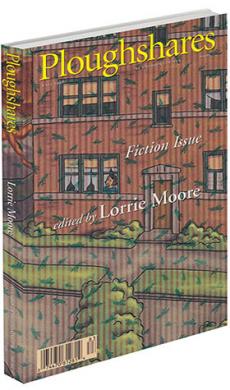rev. of Definition of the Soul by John Skoyles
Definition of the Soul
Poems by John Skoyles. Carnegie Mellon Univ. Press, $24.95 cloth, $11.95 paper. Reviewed by H. L. Hix.
The best poems in John Skoyles’s
Definition of the Soul find solace in small scale. Their particular skill — announcing the Looming whose umbrage prompts them, but answering with barely lumen enough to light the singer’s face and his next step — represents one of the best possibilities of the lyric.
The title poem, which opens the book, employs precisely this pattern. Its large problematic, defining the soul, has overwhelmed many minds, from Plato and Aristotle to the present. The title’s ambiguity affords Skoyles two options: tender a finished definition or navigate the act of defining. He chooses the latter. Rather than attempt to transcend the problematic (a vain striving for survey at which abandon hope all ye who enter), Skoyles walks carefully through its shadow, cupping his hand in front of the candle he carries. “The attempt to separate my soul from yours,” speciation without prefatory genus, the shift in scale that lets the poem work, “is like wringing out a handkerchief / wet from something spilled.” That spill sets the tone, by its suggestion that trouble has generated the affinity of the two souls. The poem continues with anecdotal indications of the relation between its
I and its
you, and ends with a metaphor that hints at a future for the souls no less troubled than their past: “The attempt to separate my soul from yours / is like the creaking of a lamppost / against a sapling in the wind. / Soon someone will come / and hack through the more fragile one.”
The epigraph that prefaces one of its poems summarizes the whole second section:
“Halfway through life, one begins looking back.” The prototypical poem in the section, “Without Warning,” replicates the same approach — large-scale problem, small-scale solution — that reappears throughout all three sections of the book. To the overwhelming burden and oppressive threat posed by midlife crisis, Skoyles answers with a tiny, apparently trivial incident he turns into a toehold. “A yellow leaf / rushing the asphalt / makes you swerve off the road, / tires grinding the grassy sleeve.” With a pre-modernist ease and self-assurance modeled on predecessors like Oliver Wendell Holmes and grounded in our flickering recollection that poetry may still be able to delight
and teach, Skoyles finds the lesson he needs: “instead of stopping / you plow along, / finding that getting off like this, / through the grit and straw, / has a great sweetness.”
As with the soul, so with providence itself. In “Little God,” prime exemplar of the explicit religious preoccupations in the book’s final section, Skoyles still explores definition, this time more by perambulation than penetration. Through an estimable act of negative theology, we learn all we need to know about Skoyles’s “little god” by its very absence from Skoyles’s observations and its failure to fulfill his yearnings. He tells his little god to observe with him the “thin drunkards” who “wrap their chests /
in a vest of old headlines,” and “the fire escape’s / homemade cross / marking the death / of our super / who jumped to end / his unspeakable ache.” He longs for “the cushioning touch / of a supreme hand / the way the chapel ceiling / shows it,” but his little god will send no Lazarus to “press a bead of water to [his] lips.”
If the book’s first poem represents one promise of the lyric, its last lists one of lyric’s ultimate ambitions: “to pronounce / the words of this world / in the language of the next.” The project with which Skoyles begins — a “Definition of the Soul” — may be de-finite, insusceptible to culmination, but undertaking it does render him the figure with which he ends, a “Patron of the Impossible.”
H. L. Hix’s most recent books are Understanding W. S. Merwin
(South Carolina, 1997), Perfect Hell
(Gibbs Smith, 1996), and Spirits Hovering Over the Ashes: Legacies of Postmodern Theory
(SUNY, 1995). He teaches at Kansas City Art Institute.

